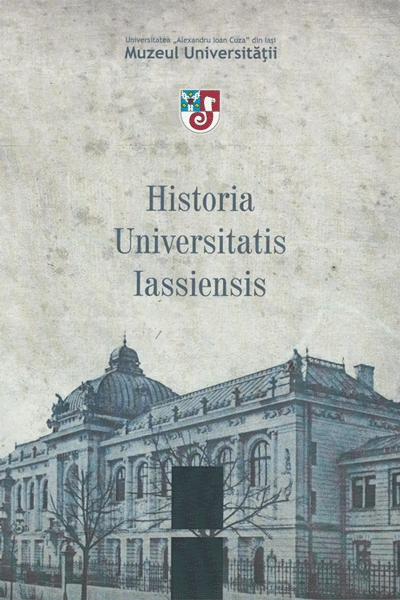O tradiție pierdută. Donații și donatori ai Alma Mater
A Lost Tradition. Donors and Donations to Alma Mater
Author(s): Cătălin BotoșineanuSubject(s): History, Cultural history, Social history
Published by: Editura Universităţii »Alexandru Ioan Cuza« din Iaşi
Keywords: donations; patrimony; Iași University; twentieth century
Summary/Abstract: The dynamics of the yearly budget, from drafting to implementation, the accountants’ yearly reports, the inventory of the institutional patrimony are themes which have received little attention in the historiography of Iași University. Romanian universities were legal persons “with the right to earn and own”. During the studied time, the laws regulating superior education from 1898, 1912, and 1932 stipulated, under different terms, that universities had the auto-nomy to manage their own funds. The University Senate would rule on the acceptance of “donations” and then follow the legal procedure for taking possession. The University could not accept donations from natural or legal persons without the approval of the Ministry of Instruction. The rector, through the University Senate, had the legal attribution of “managing the University’s wealth, according to the donation papers”. Money-wise, the donated sums ranged from a few hundred to half a million lei. Most of the resources were absorbed by the dream of building the University dormitory, which was consuming Romanian society and the decisional factors of Iași as early as the beginning of the twentieth century. Thus, private individuals, prefect’s offices and city halls from Moldavia or Bessarabia, as well as various banks heeded the rector’s call by periodically supporting the logistics of the students’ accommodation and financial support with sums of money. Another share of the donations was connected to the university’s immovable patrimony, which was build gradually, with many sacrifices. Buildings such as these, which entered the University patrimony usually for the use of dormitories and canteens, can still be identified in different areas of Iași besides the Copou Boulevard, close to the University. Donated buildings can also be found in cities such as Bacău, Slănic Moldova, Gura Humorului or Kishinev. I also chose to present the saga of the academic patrimony of Iași at the beginning of the communist era. Vast tracts of land and forests which were meant to be donated were kept from the university as a result of the Ministry of Agriculture’s blunt interference. Another deprivation occurred in 1947-1948, when all locations which were part of the University’s immovable property were assigned to the use of the Students’ Association.
Journal: Historia Universitatis Iassiensis
- Issue Year: 2019
- Issue No: 10
- Page Range: 97-117
- Page Count: 21
- Language: Romanian

